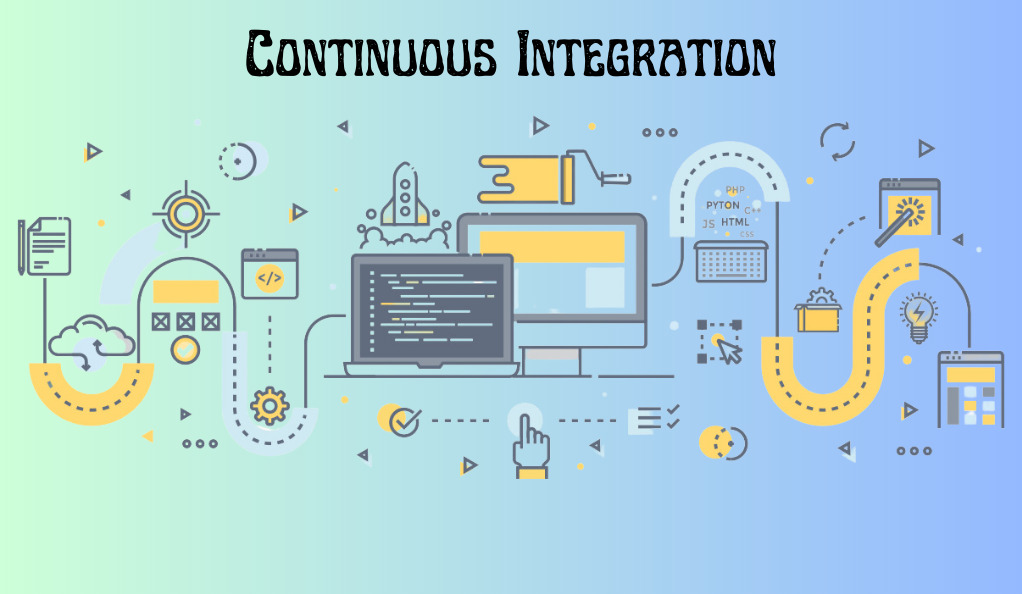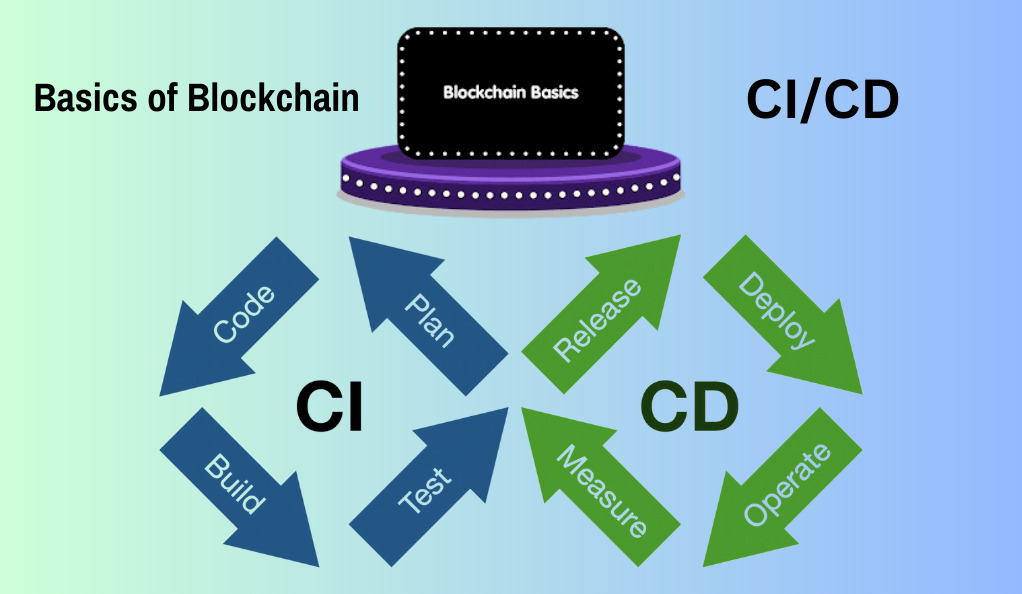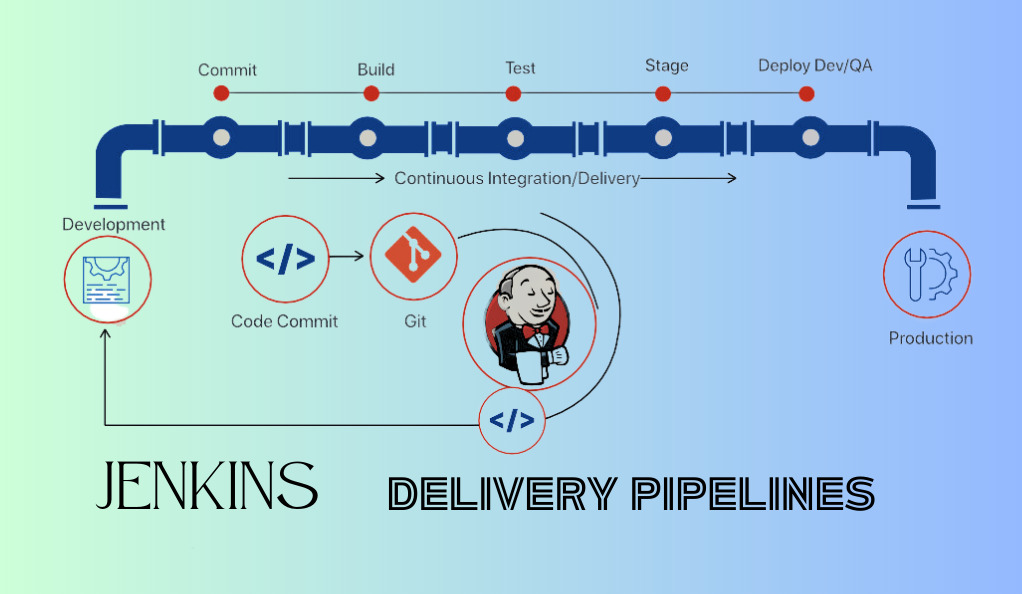Continuous Integration & Development in Crypto Platforms

In the rapidly evolving world of technology, the integration of Continuous Integration and Continuous Development (CI/CD) into crypto platforms has become a pivotal discussion point. As the digital transformation wave continues to reshape industries, understanding the synergy between CI/CD and blockchain technology is crucial for both developers and stakeholders. This section will provide a comprehensive introduction to the subject, breaking down the foundational concepts and highlighting their significance in today’s digital age.
1.1. What is Continuous Integration & Continuous Development (CI/CD)?
Continuous Integration (CI) is a software development practice where code changes are automatically integrated into a shared repository multiple times a day. Each integration is then verified by an automated build and tests to detect errors as quickly as possible.
Continuous Development (CD), on the other hand, is an extension of CI, ensuring that code changes are automatically prepared for a release to production. It emphasizes the importance of automating the end-to-end software release process, from integration to delivery.
| Term | Definition |
|---|---|
| CI (Continuous Integration) | Automated integration of code changes into a shared repository. |
| CD (Continuous Development) | Automated preparation of code changes for production release. |
1.2. The Crypto Connection
Cryptocurrencies, at their core, are built on blockchain technology—a decentralized ledger of all transactions across a network. This technology promises transparency, security, and decentralization. However, with these promises come challenges, especially when integrating new features or ensuring platform stability.
Given the decentralized nature of blockchain, integrating new code or features without disrupting the network becomes a complex task. This is where CI/CD comes into play. By automating the integration and deployment processes, developers can ensure that new features or code changes are seamlessly integrated into the crypto platform without causing disruptions.
1.3. Why is CI/CD Important in the Crypto World?
- Security: Cryptocurrencies are often targets for cyber-attacks. CI/CD ensures that security patches are integrated and deployed promptly, safeguarding the platform and its users.
- Efficiency: Automated testing and deployment mean faster release cycles, ensuring that the platform remains competitive and up-to-date.
- Reliability: Automated tests ensure that any new integration does not disrupt the existing system, ensuring a reliable user experience.
1.4. CI/CD and Blockchain: A Match Made in Tech Heaven
Blockchain’s decentralized nature means that any change affects multiple nodes or participants in the network. CI/CD ensures that these changes are harmoniously integrated, ensuring the network’s stability. Moreover, as blockchain platforms evolve, there’s a growing need for regular updates, security patches, and new feature integrations—all of which are streamlined by CI/CD processes.
The Basics of Blockchain and CI/CD
Blockchain and CI/CD, though seemingly disparate, share a symbiotic relationship in the realm of crypto platforms. To fully grasp their interplay, it’s essential to first understand their individual functionalities and the challenges they address.

2.1. Demystifying Blockchain
At its core, a blockchain is a distributed ledger or database, shared across a network of computers or nodes. Each block in this chain contains a number of transactions, and every time a new transaction occurs on the blockchain, a record of that transaction is added to every participant’s ledger.
Key Features of Blockchain:
- Decentralization: Unlike centralized databases, such as a SQL database, where a single entity has control, in blockchain, every participant (nodes/computers) on the network has access to the entire database and its complete history.
- Transparency: Changes to the public blockchain are publicly viewable by all parties, ensuring full transparency in the ecosystem.
- Security: Transactions must be approved through consensus algorithms before they are recorded. Once approved, they’re encrypted and linked to the previous transaction, making unauthorized alterations almost impossible.
2.2. Continuous Integration & Development: A Recap
CI/CD bridges the gap between development and operations teams by automating the building, testing, and deployment processes.
Continuous Integration (CI): Focuses on the automation of code integration from multiple contributors. This ensures that code changes are continuously merged to a central repository, where automated builds and tests are run.
Continuous Deployment (CD): Takes the code from CI and automatically deploys it to the production environment, ensuring that software is always in a deployable state.
2.3. Challenges in Blockchain Development
- Network Consensus: In a decentralized system, achieving consensus across all nodes for validating transactions can be challenging.
- Smart Contract Complexity: These self-executing contracts with the terms directly written into code can be complex to develop and deploy.
- Scalability Issues: As the number of transactions increases, ensuring the blockchain can handle the volume without slowing down is a concern.
- Interoperability: Ensuring different blockchain systems can communicate and share information.
2.4. How CI/CD Addresses These Challenges
- Automated Testing: CI/CD pipelines can automatically test new blockchain code or smart contracts, ensuring they function as expected before deployment.
- Frequent Iterations: Regular updates mean issues can be identified and addressed faster, ensuring the blockchain remains scalable and efficient.
- Consistent Environment: CI/CD ensures that the code is deployed in a consistent environment, reducing discrepancies between development, testing, and production.
- Rollbacks: If an issue is detected post-deployment, CI/CD allows for quick rollbacks, ensuring system stability.
2.5. CI/CD and Blockchain: A Comparative Analysis
| Aspect | Blockchain | CI/CD |
|---|---|---|
| Primary Focus | Secure and transparent record-keeping | Automating software delivery processes |
| Key Benefit | Decentralization and immutability | Faster and reliable software releases |
| Main Challenge | Scalability and interoperability | Ensuring consistent environments |
| Role in Crypto Platforms | Underlying technology for transactions | Ensures efficient and secure software updates |
Challenges in Implementing CI/CD for Blockchain
The fusion of CI/CD processes with blockchain technology promises a seamless and efficient development cycle for crypto platforms. However, this integration is not without its challenges. This section will delve into the intricacies of these challenges and the complexities they introduce into the development landscape.
3.1. The Diverse Deployment Environments in DLT Networks
Distributed Ledger Technology (DLT), the backbone of blockchain, operates in a decentralized environment. This means that any change or update needs to be propagated across a myriad of nodes, each potentially having its own unique environment.
- Challenge: Ensuring that the CI/CD pipeline can cater to these diverse environments without causing inconsistencies or failures.
- Implication: A failure in one node due to environmental discrepancies can lead to data inconsistencies across the network.
3.2. Continuous Delivery of Business Applications
Blockchain platforms serve as hosts for diverse business applications, ranging from financial dealings to supply chain monitoring. The task at hand is that these applications necessitate regular updates, which must be executed without disturbing the foundational blockchain or interconnected applications. The gravity of the situation lies in the fact that a faulty update could jeopardize the entire business workflow, resulting in monetary setbacks or security breaches.
3.3. Immutable Nature of Blockchain
At the heart of blockchain lies its immutability principle, wherein once data is appended, it remains unchangeable. However, this characteristic presents a distinct complication for continuous integration and continuous deployment (CI/CD) procedures. Unlike conventional software, rectifying a faulty update is considerably more intricate. Consequently, developers must exercise heightened vigilance, meticulously confirming the accuracy of updates prior to implementation. The stakes are amplified due to the irreversible nature of blockchain transactions.
3.4. Smart Contract Upgrades

Smart contracts are self-executing contracts with the terms of the agreement directly written into code.
Challenge: Upgrading or modifying these contracts without disrupting the active ones or the associated data.
Implication: A flawed smart contract update can lead to financial discrepancies or even complete loss of funds.
3.5. Data Privacy and Security Concerns
Given the transparent nature of public blockchains, ensuring data privacy during continuous deployments becomes a challenge.
- Challenge: Balancing the need for transparency with the requirement for data privacy, especially during updates or changes.
- Implication: A breach in data privacy can lead to sensitive information being exposed, with potential legal and financial repercussions.
3.6. Integration with Legacy Systems
Numerous enterprises adopting blockchain integration continue to depend on outdated legacy systems for diverse functions. The task at hand involves establishing smooth compatibility between the continuous integration and continuous deployment (CI/CD) procedures of blockchain platforms and these legacy systems. The potential consequence of insufficient integration is the emergence of isolated data repositories, inefficacies, and a rise in operational expenditures.
Solutions and Innovations
The challenges of integrating CI/CD with blockchain are undeniably intricate. However, the tech world has always been about overcoming hurdles and pushing boundaries. This section will spotlight the innovative solutions that have been developed to address the challenges of melding CI/CD processes with blockchain technology.
4.1. Continuous Delivery Pipelines Using Jenkins
Jenkins, a widely-used open-source automation server, has been adapted to cater to blockchain’s unique requirements.

- Solution: Jenkins can be configured to create specialized pipelines for blockchain, automating the build, test, and deployment phases, ensuring consistent and error-free releases.
- Benefit: This reduces manual intervention, minimizes errors, and accelerates the deployment process, ensuring that blockchain platforms remain agile and up-to-date.
4.2. Smart Contract Design Patterns
In response to the constraints imposed by the unchangeable attributes of smart contracts, distinct design patterns have been conceived. Notable among these is the Proxy Delegate Pattern, which facilitates the enhancement of smart contracts without disrupting their current instances or the correlated data. The advantage of such patterns lies in preserving the flexibility of smart contracts, enabling enhancements while safeguarding the credibility of data and preventing financial inconsistencies.
4.3. Unified Modeling Language (UML) for Blockchain Network Installation
UML, a standardized modeling language, has been adapted for blockchain network installations.
- Solution: By creating a visual representation of the blockchain network and its nodes, developers can better understand the deployment environment, ensuring that CI/CD processes are tailored to cater to the diverse environments in DLT networks.
- Benefit: This visual approach reduces environmental discrepancies, ensuring smoother and more consistent deployments across the network.
4.4. Containerization and Orchestration with Docker and Kubernetes
To ensure consistent environments across the diverse nodes of a blockchain network, containerization tools like Docker and orchestration platforms like Kubernetes have been employed.
Solution: These tools package applications and their dependencies into containers, ensuring that the application runs consistently across various computing environments.
Benefit: This eliminates the “it works on my machine” problem, ensuring that deployments are consistent across the entire blockchain network, regardless of the underlying infrastructure.
4.5. Data Privacy Solutions: Zero-Knowledge Proofs (ZKPs)
In response to apprehensions surrounding data privacy within public blockchains, cryptographic techniques like Zero-Knowledge Proofs (ZKPs) have been introduced. ZKPs enable one party to validate the accuracy of a statement to another party without divulging any precise details about the statement itself. This innovation guarantees the preservation of data privacy throughout ongoing deployments and routine activities. The advantage lies in striking a harmonious equilibrium between the demand for transparency in blockchain operations and the essential requirement of maintaining the confidentiality of sensitive information.
4.6. Middleware Solutions for Legacy System Integration
Middleware platforms have been developed to bridge the gap between blockchain platforms and legacy systems.
- Solution: These platforms act as intermediaries, translating and routing data between blockchain platforms and older systems, ensuring seamless integration.
- Benefit: Prevents data silos and ensures that businesses can leverage the benefits of blockchain without overhauling their existing infrastructure.
Case Study: Continuous Delivery of Blockchain Distributed Applications
To truly understand the impact and practical application of CI/CD in blockchain, it’s beneficial to delve into real-world scenarios. This section will explore a case study that highlights the challenges, solutions, and outcomes of implementing CI/CD in a blockchain distributed application.
5.1. Background: FinTech Startup ‘CryptoFlow’
CryptoFlow is a FinTech startup that developed a blockchain-based platform for cross-border payments. With a growing user base and frequent feature releases, the company faced challenges in ensuring seamless updates without disrupting the user experience.
5.2. The Challenge
- Rapid Scaling: As CryptoFlow gained popularity, the number of transactions on its platform surged, demanding frequent scalability updates.
- Feature Deployment: With competitors emerging, CryptoFlow needed to roll out new features quickly to stay ahead.
- Security Patches: Being in the financial domain, ensuring the utmost security was paramount. This meant that security patches had to be deployed promptly and flawlessly.
5.3. The CI/CD Solution
CryptoFlow decided to implement a robust CI/CD pipeline to address these challenges.
- Automated Testing: Every code change underwent rigorous automated testing to ensure functionality and security.
- Staging Environment: Before deploying to production, updates were deployed to a staging environment that mirrored the live environment, ensuring that any issues could be identified and rectified beforehand.
- Rollback Mechanism: In the rare event of a flawed deployment, the system was equipped to rollback to the previous stable version, ensuring uninterrupted service.
5.4. Integration with Blockchain
Given the immutable nature of blockchain, CryptoFlow employed the Proxy Delegate Pattern for smart contract updates, ensuring that existing contracts remained unaffected during upgrades.
5.5. The Outcome
Reduced Downtime: With the CI/CD pipeline in place, CryptoFlow reduced its system downtime by 90%, ensuring a seamless user experience.
Faster Feature Deployment: Features that previously took weeks to deploy were now being rolled out in days, keeping CryptoFlow ahead of its competitors.
Enhanced Security: Automated security tests and prompt patch deployments fortified the platform against potential threats.
5.6. Lessons Learned
- Proactive Approach: Waiting for issues to arise and then addressing them is not viable. A proactive approach, anticipating potential challenges, and addressing them beforehand is crucial.
- User-Centric Focus: At the end of the day, ensuring a seamless user experience should be the primary goal. All technical implementations should revolve around this objective.
- Continuous Learning: The tech landscape is ever-evolving. Staying updated and being willing to adapt and learn is paramount.
The Future of CI/CD in Crypto Platforms
The integration of CI/CD with blockchain technology has already made significant strides, but the journey is far from over. As both domains continue to evolve, their convergence will undoubtedly lead to new challenges and opportunities. This section will cast a spotlight on the potential future trends, predictions, and the transformative impact of CI/CD on the growth of crypto platforms.
6.1. Enhanced Automation with AI
- Prediction: The next wave of CI/CD will likely see the integration of Artificial Intelligence (AI) to further automate and optimize the deployment process.
- Impact: AI can predict potential issues based on historical data, optimize testing processes, and even automate code corrections, leading to even faster and more reliable deployments.
6.2. Decentralized CI/CD Platforms
Prediction: Just as blockchain decentralizes financial transactions, we might see the emergence of decentralized CI/CD platforms that leverage blockchain technology.
Impact: This could lead to more transparent, secure, and tamper-proof CI/CD processes, ensuring even greater trust and reliability in software deployments.
6.3. Quantum Computing and Blockchain
Anticipating the rise of quantum computing into mainstream prominence, blockchain platforms are poised to undergo adaptation to this evolving paradigm, considering the security vulnerabilities that quantum computers introduce to conventional cryptographic techniques. Consequently, the integration of quantum-resistant algorithms into existing blockchain frameworks will rely significantly on the role of continuous integration and continuous deployment (CI/CD) processes, ensuring a smooth transition and bolstered security measures.
6.4. Cross-Chain Integration
- Prediction: As the number of blockchain platforms grows, there will be an increasing need for these platforms to communicate and share data, leading to the rise of cross-chain integration.
- Impact: CI/CD will be pivotal in ensuring that updates and features catering to cross-chain communication are deployed seamlessly, ensuring interoperability between different blockchain platforms.
6.5. Enhanced Security Protocols
Prediction: With increasing threats to digital assets and data, the future will see the development of more advanced security protocols for blockchain platforms.
Impact: CI/CD will ensure that these advanced security measures are integrated promptly and flawlessly, safeguarding assets and ensuring user trust.
6.6. User-Centric Blockchain Applications
Envisioning the trajectory of blockchain, its trajectory extends beyond digital currencies to encompass user-centric applications, spanning decentralized social networks to personal data marketplaces. In this landscape, continuous integration and continuous deployment (CI/CD) will take a prominent role, ensuring the consistent updating of these applications while prioritizing the enhancement of user experiences as a central objective.
Conclusion
The fusion of Continuous Integration and Continuous Development (CI/CD) with blockchain technology heralds a transformative era for crypto platforms. As we’ve journeyed through the intricacies of their integration, the challenges faced, and the innovative solutions employed, it’s evident that this synergy is pivotal for the future growth and evolution of the crypto landscape. As blockchain platforms continue to proliferate and shape the digital world, the role of CI/CD in ensuring their agility, security, and user-centricity will be paramount, promising a future where technology not only serves but also elevates the human experience.
Bitcoin-up is dedicated to providing fair and trustworthy information on topics such as cryptocurrency, finance, trading, and stocks. It's important to note that we do not have the capacity to provide financial advice, and we strongly encourage users to engage in their own thorough research.
Read More